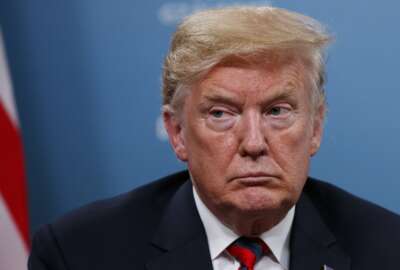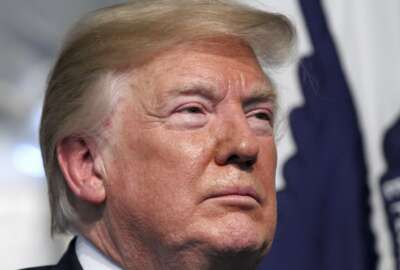
OPM: Postal workers not affected by Trump’s workforce executive orders
While the Trump administration faces pushback from unions and members of Congress over its trio of federal workforce-related executive orders, more than half a...
While the Trump administration faces pushback from unions and members of Congress over its trio of federal workforce-related executive orders, more than half a million government workers, it turns out, won’t fall under the orders’ purview.
According to legal counsel obtained by the National Association of Letter Carriers, Postal Service employees won’t be impacted by President Donald Trump’s executive orders aimed at reducing the time it takes to fire poor-performing federal employees and overhaul federal employees union rights, including cuts to official time.
The Office of Personnel Management said it concurs with NALC’s interpretation of the executive orders.
All three executive orders impact federal positions classified under Title 5 of the U.S. Code, which include the majority of the 2 million employees in the federal civil workforce, but certain government workers, like the country’s more than 600,000 postal workers and 40,000 federal airport security screeners hired by the Transportation Security Administration.
Over the years, several members of Congress, including Reps. Bennie Thompson (D-Miss.) and Nita Lowey (D-N.Y.) have pushed unsuccessfully to move transportation security officers to Title 5, on the ground that they’d reap the benefits of a greater merit systems protections and a better pay scale.
However, NALC President Fredric Rolando said his union remains committed to working with the American Federation of Government Employees to overturn the executive orders in court.
“These executive orders are an outrageous attack on America’s civil servants, the everyday heroes who make sure that our airlines and foods are safe, our Social Security checks are distributed and the air, water and environment we depend on is clean,” Rolando said in a statement. “The NALC stands in solidarity with AFGE and all the federal unions and will work with them to reverse these executive orders.”
While it remains a government agency, the Postal Service has also emerged unscathed from other recent workforce changes, including the govermentwide hiring freeze the Trump administration implemented at the beginning of 2017.
But Postal Service might still have some workforce issues in its future.
Under an executive order Trump signed in April, a White House postal task force is reviewing the USPS business model and will issue its recommendations later this summer.
The task force, chaired by Treasury Secretary Steve Mnuchin, will look at the whole scope of the Postal Service enterprise, including its monopoly on delivering letters and its rate-setting for big e-commerce companies like Amazon
In an interview with Federal News Radio last Friday, Kevin Kosar, a senior fellow and the governance project director at the R Street Institute, said the task force will likely propose ways to cut USPS.
“I would certainly expect that the recommendations would have ideas about how the Postal Service can cut costs. I don’t think the presidential task force is going to come back and say, ‘Postal Service demand is going to keep growing and revenues are going to keep growing, so everything’s going to be alright,'” Kosar said.
In addition to potentially reducing the number of days of delivery, Kosar said another likely source of cuts would be reform to the postal employees’ collective bargaining rights.
“The Postal Service’s overhead right now, 80 percent of that is labor. If 80 percent is labor, 20 percent is everything else — that means the Postal Service buildings, trucks, all the fuel they buy, all the contracts they do for other services — that’s the remaining 20 percent. So you see where the obvious place that the task force might look,” Kosar said.
Copyright © 2025 Federal News Network. All rights reserved. This website is not intended for users located within the European Economic Area.
Jory Heckman is a reporter at Federal News Network covering U.S. Postal Service, IRS, big data and technology issues.
Follow @jheckmanWFED




